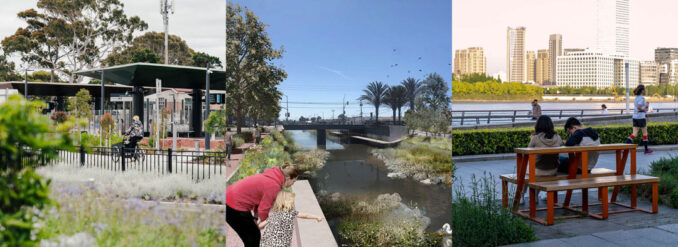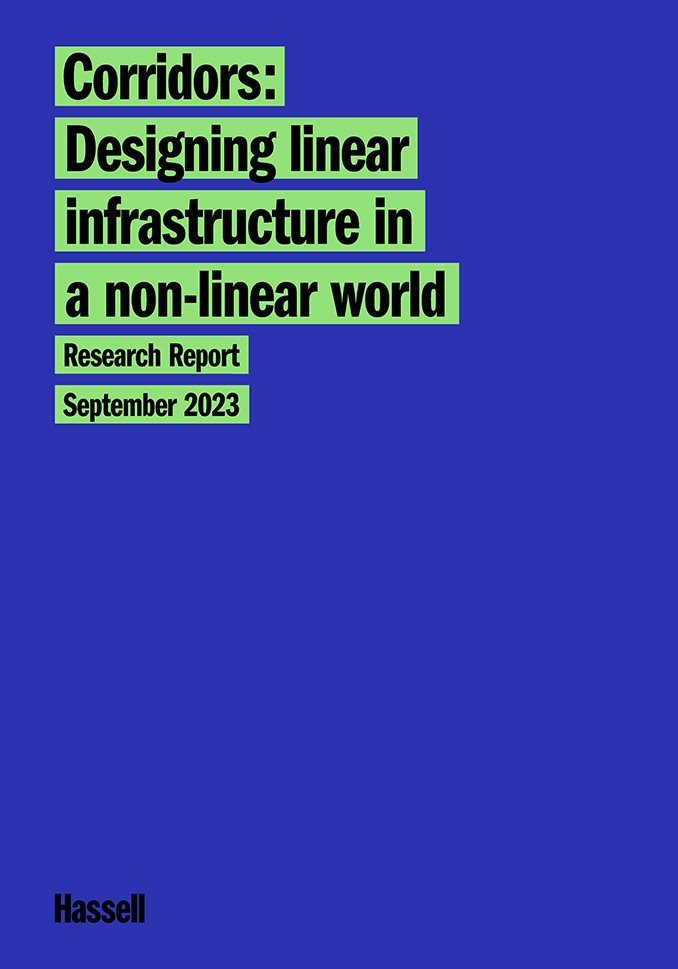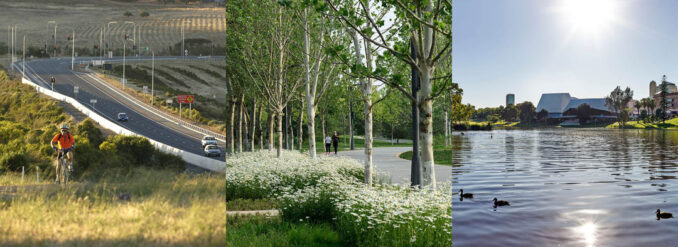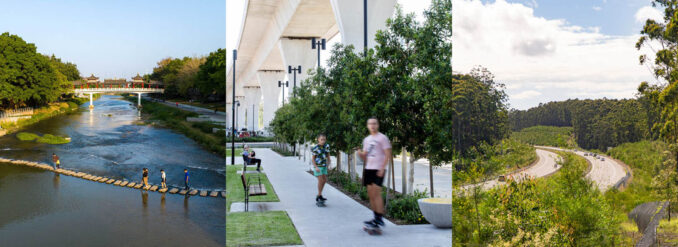
(Middle) Colma Creek, South San Francisco, San Francisco US. Image: Hassell
(Right) West Bund Waterfront Public Realm, Shanghai, China. Image: Hassell
Hassell recently released a new study entitled Corridors: Designing linear infrastructure in a non-linear world that uncovers how linear infrastructure — from high streets to highways, waterways to railways — can, and indeed must, be designed to deliver greater value for all.

In the report, Hassell’s Urban Research Lead Camilla Siggaard-Andersen makes it clear that — for the sake of our planet and communities — a new approach is urgently required to tackle the shared multidimensional impacts of corridors.
“Through the creation of a common taxonomy and associated workshop toolkit, ‘Corridors’ offers a practical approach to breaking down silos and facilitating holistic thinking,” says Siggaard-Andersen.
By focusing on evolving infrastructure from single-use to multi-benefit, the study aims to inform, inspire, and empower a worldwide transition to a more diverse, integrated, and outcome-oriented method of shaping linear space.

(Middle) Central Green Forest Park, Beijing, China. Photographer: Xi Rao and Xuefeng Li
(Right) River Torrens Linear Park, Adelaide, Australia. Photographer: Peter Bennetts
This is a challenge of significant proportion. According to the Central Intelligence Agency’s World Factbook, the global road network, railway network, and waterway network are an estimated 40 million kms, 1.3 million kms, and 631,000 kms in length, respectively. (Source: CIA.gov).
Combined, these corridors could loop one-thousand times around the Earth, concurrently causing great levels of connectivity and fragmentation. And while built linear infrastructure usually brings significant economic opportunities, the social and especially environmental costs are rapidly mounting.
“Designing corridors is not just about connecting A to B. We have to design a great experience between A and B too, for humans and nature alike.”
— Angus Bruce, Hassell Head of Landscape Architecture
THE CALL FOR A HOLISTIC APPROACH
It is increasingly evident that corridors should aim to deliver economic benefits, enhance social connectivity, and reduce habitat fragmentation simultaneously.
By showing that corridors always produce complex outcomes, Hassell argues that they must also be designed and managed as complex spaces — bringing together overlapping uses, integrated systems, and holistic measures. This is the case for both new and existing infrastructure and corridors.

(Middle) Metro North West, Sydney, Australia. Photographer: Brett Boardman
(Right) Pacific Highway Upgrade, NSW, Australia. Photographer: Greg Jackson
With the new research report, Hassell offers an open call for governments, infrastructure project consortia, engineers, and decision makers. A call to come together to plan, design and manage integrated infrastructure — for the betterment of society and the planet — based on three determining factors: purpose, design and optimal outcomes.
Siggaard-Andersen explains that moving towards a holistic approach requires new motives, technologies, and value definitions that can cut across administrative, physical, cultural, and professional boundaries.
In parallel, designing linear infrastructure must increasingly involve thinking beyond traditional methods and embracing novel concepts.
From Metro North West in Sydney to Longgang River Blueway in Shenzen, China and Colma Creek Adaptation in San Francisco, the report showcases over 30 corridor projects that achieve positive outcomes – for people, planet, and prosperity.
